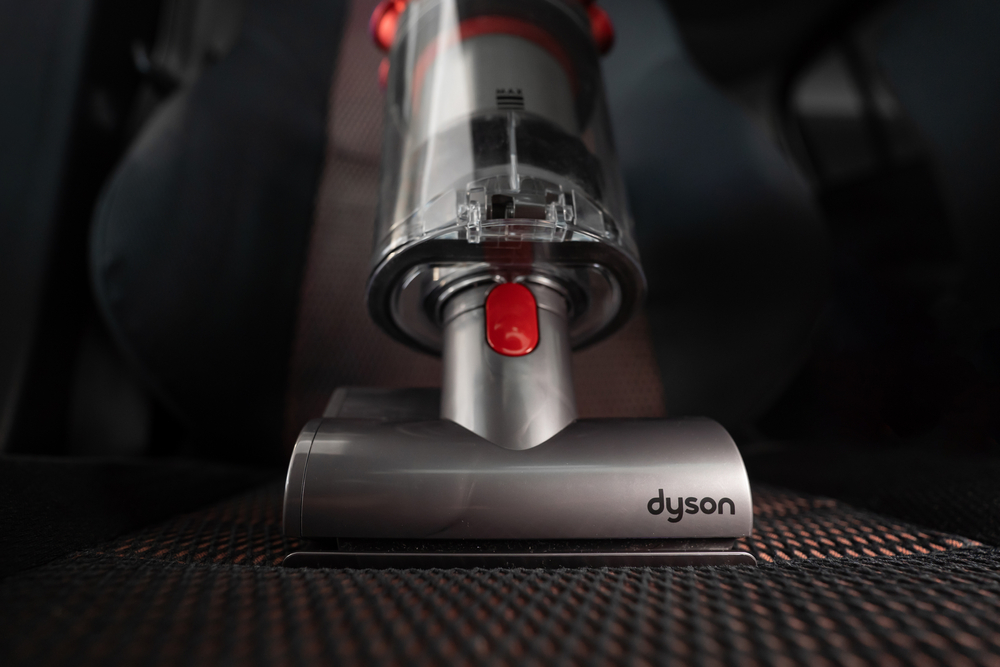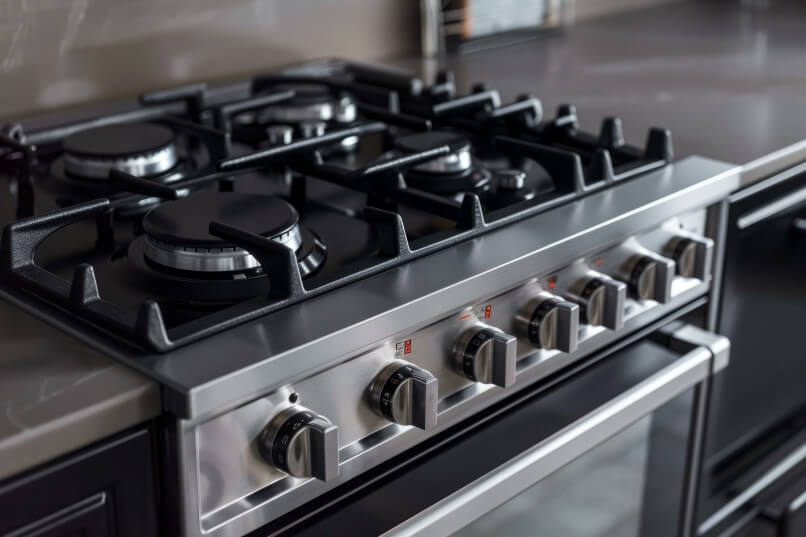Hobs – What’s Best – Induction vs Ceramic vs Gas

Not so long ago, deciding which hob to buy was simple: electric or gas. But this choice becomes a bit more complicated with ceramic and induction hobs. We all want efficiency when it comes to time and money, as well as our energy usage, but without compromising on design and safety – especially if there are little hands around. Choosing between them however, can be tricky, so we’ve shared the pros and cons for each type to help you make the right decision for your household.
Induction Hobs
Pros
- Induction hobs get hotter quicker, meaning less time cooking
- The flat surface makes it easier to clean
- The induction hob will not heat up unless there is a pan on it, nor will it hold heat once a pan is removed, meaning it is safer
- If a pan is not detected, an induction hob will automatically switch off
- Induction hobs are up to 50% more energy efficient
Cons
- An induction hob is often more expensive than a ceramic or gas
- Not all pans work on them so new ones may have to be bought
- Some induction hobs are a little louder than ceramic or gas due to the heating mechanism
Our Induction Hob Recommendations
Statesman IHZ460 - This Black Statman Induction Hob (below) has 4 heat zones and 9 power levels for optimal usage. The IH60 model also comes with a timer, Auto Shut off, Child Safety Lock, Residual Heat Indicator and a manufacturer's warranty of 2 years for optimal peace of mind.

Zanussi ZITN644K - This Zanussi induction hob is user-friendly, energy efficient, easier to clean and quick to use. It has Direct Touch Control, which lets you change each hob’s temperature with just your fingertip, giving you more control over your cooking. Boiling water quicker than the kettle and heating pans up almost instantly, the time spent cooking decreases, saving you both time and energy.
Ceramic Hobs
Pros
- Easy-to-use touch controls
- The flat surface makes them easy to clean
- Fast to heat up
- Ceramic hobs can work with any pan type
- Ceramic hobs are generally cheaper than induction
Cons
- Ceramic hobs can easily be scratched by moving pans
- Repairs can be expensive
- Ceramic hobs can stay hot even after the pan has been removed
- Can be broken if anything heavy falls on it
- Heat distribution can be uneven
- Not as easy to control the heat settings
Our Ceramic Hob Recommendations
Culina CER60DTC 59cm wide - This Culina ceramic hob is slightly smaller than the average, making it perfect for smaller kitchens. Not only does it look stylish, but it is also easy to clean, performs well with touch control and has a red indicator light which tells you when the surface is hot, keeping everyone safe. Plus this hob also comes with a 5years warranty.
Amica ACH6420FR - The Amica ceramic hob (below) has a range of safety features, making it perfect for family kitchens. The four-zone hob has a front touch control, ensuring each hob glows red when hot, as well as a temperature limiter and time limit security system. The Amica hob also comes with a 2-years warranty to keep your mind at ease.

Gas Hobs
Pros
- The direct flame is more responsive, allowing you more control over the cooking
- A gas hob is particularly good for cooking directly on the flame – such as when charring vegetables
- Perfect for traditional kitchens, with more contemporary designs becoming more popular
- A gas hob is generally far cheaper than induction or ceramic
- Gas hobs will work with all types of pan
Cons
- The shape of the gas hob makes it more difficult to clean
- A gas hob needs to be connected to the gas mains
- Slightly less safe for young children given the naked flame
- Potentially less environmentally friendly
- Gas hobs can be quite noisy
Our Gas Hob Recommendations
Zanussi ZGGN645K - The Zanussi gas hob (below) is designed specifically to direct heat to the base of your pans, resulting in quick, accurate cooking results. In turn, this saves up to 20% of energy usage when boiling, frying or simmering. Plus with cast iron grids, a powerful Wok, perfect flame regulation and 1-year warranty, this hob is a great buy for those with busy lifestyles looking to save a bit of time and money.

Statesman GH75SS - Slighter wider than the standard four-hob, this Statesman has five gas hobs, all with front control and automatic ignition. For safety, it has a flame failure safety device, ensuring the gas supply to the burner is stopped as soon as the flame has been extinguished. With a cast iron pan support, rapid burner, wok burner, semi-rapid burner and two auxiliary burners, this is the perfect hob for a serious cook and comes with a 2-years warranty.
In Summary
Deciding which hob is the best for your family can be a bit of a balancing act. You may have to prioritise budget over energy efficiency or how eco-friendly the appliance is for example.
Induction hobs are the most environmentally friendly out of the three, but quite often the most expensive. Ceramic hobs are easier to clean but susceptible to damage. Gas hobs are less energy efficient but provide more control over your cooking. But no matter which hob you choose, there are ways to ensure you are using them as efficiently as possible such as; making sure you use the right pans for the right hob - Matching the pan to the hob size can save up to 40% of the energy that would be used by using the wrong-sized pan. And, if you’re trying to boil water on the hob, remember to put the lid on the pan, as this can save up to 85% of energy.

Need a bit of advice about purchasing a new hob? Then do get in touch or pop down to our Luton showroom.
At Joe Graham & Son Ltd. we are committed to helping customers find the perfect appliances for their homes. From ovens to fridges, dryers, hobs, dishwashers, kettles and washing machines, we have the latest ranges from some of the world’s leading brands, for you to view and buy at great prices.
Written for Joe Graham & Son. ltd by Victoria Bucknell & Alexandria Campbell
VirtuallyAly - Digital Marketing Services.












